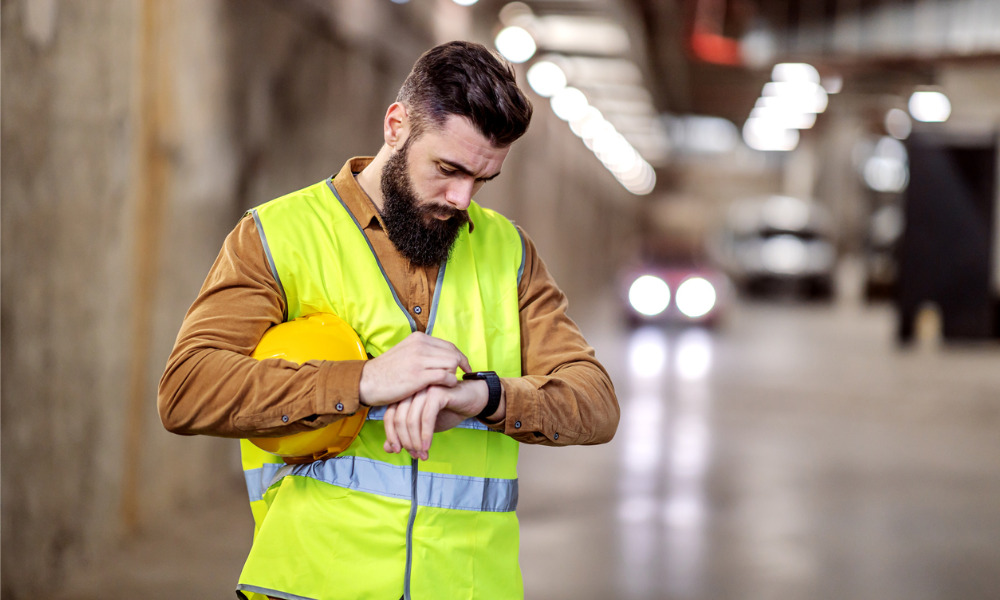'These technologies play an important role in how employers ensure safe, touchless returns to workplaces'

A majority of Americans are willing to try out wearable devices that provide safety benefits, according to a survey from tech company Nymi in Toronto.
Seventy-seven per cent say they would wear an employer-issued wearable on their wrist if it provides benefits such as social distancing reminders and eliminating the need for passwords or access key cards.
Among them, 91 per cent would still wear the device even if it collects “relevant” data, while allowing users to opt in and erase that data anytime.
"Wearable technologies play an important role both in how employers ensure safe, touchless returns to workplaces and incorporate more efficient ways of completing daily tasks, such as logging into work systems through the tap of a band," says Chris Sullivan, CEO of Nymi.
In early 2020, a wearable product called the Social Distancer was being touted as a way to help workers maintain a two-meter distance from each other.
Privacy concerns
The top reason why some respondents are not onboard with wearable devices? Privacy, according to the Nymi survey of 1,984 respondents conducted Nov. 13 to 17, 2020.
More than half (56 per cent) indicated that a desire to keep their information private would be a barrier to usage, while 44 per cent felt their company might not use their data responsibly.
Having a policy that ensures privacy of information and governs use of the information would address possible objections, says Nymi, and would lead to a significant increase in user adoption.
"Making employees feel safe and comfortable at work isn't just about preventing them from catching COVID-19 or getting in an accident. Companies have a responsibility to make technology decisions that will give workers full data privacy,” says Sullivan. “In the case of deploying technology such as a workplace wearable, that means providing the option for employees to opt-in for the collection of this data, erase their data at any time, and more."
The future
Wearable technology is the future of workplace safety, says Melissa Alvarez, growth marketing associate at RapidSOS in New York, an emergency technology company. She claims wearables provide a lot of safety benefits for both employers and employees.
“More than personal products, wearables have the power to alter the employee experience into one that is more productive and ultimately more secure. New health and safety features now alert users of irregularities and health concerns through features like ECG tests, fall detection, and step trackers. In the case of a life-threatening situation, wearable devices can show first responders this real-time, vital data from wearables before they arrive at the scene of emergencies,” she says.
“For positions that require independence, like couriers and hotel cleaning staff, wearables can be a faster way to call for help in times of crisis or danger. Panic buttons, in particular, are discreet and immediate when triggering alerts for help. Coming in the form of charms or clip on accessories for uniforms, panic buttons can be connected to the workplace or a mobile app, which may store information about the user.”




